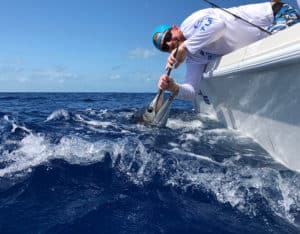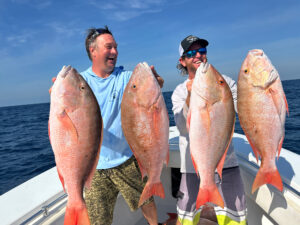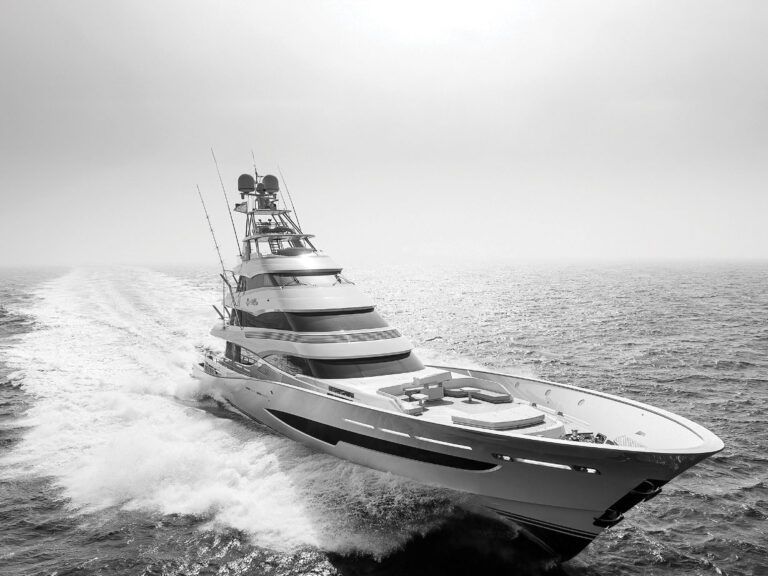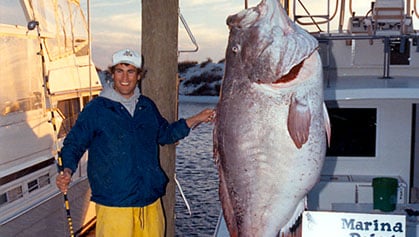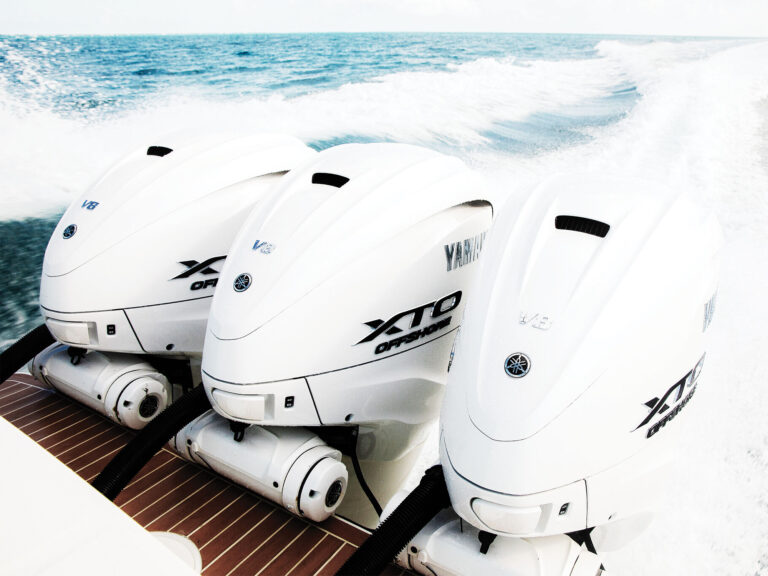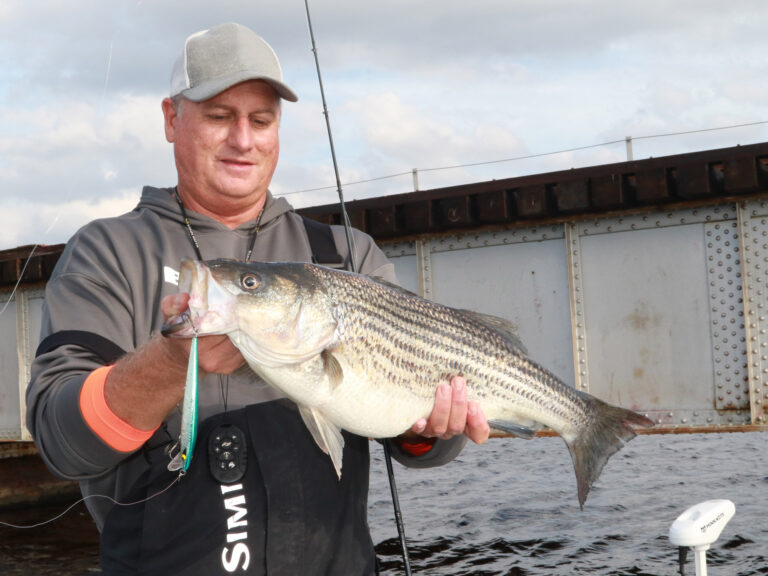
Brand-New Playbook for Bass
From Virginia to Maine, striped bass (Morone saxatilis) are often the center of every hardcore angler’s universe. Strong, hard-striking and gorgeous, with fleeting hues of pink and purple, the extraordinary bass is revered by sportsmen along the coast.
Yet most fishermen who spend more than a few days on the water each season acknowledge that the dynamics of striped bass fishing have changed considerably. Anglers saw shifts in striper size and abundance for well over a decade, with the latest science — a stock assessment released in 2014 — pretty clear in its conclusions: Numbers have diminished gradually but significantly since 2006.
Yes, things have changed since the boom years, but it certainly isn’t all doom and gloom. There’s still outstanding fishing attainable along the striper coast and its many estuaries, and the future looks bright too. But to stay in the game, anglers will have to adjust.

Scale Down for Schoolie Fever
When I first conceived this article, I planned on writing about how to target a less abundant stock composed of mostly larger stripers — because up until the spring of 2015, that’s primarily what the striped bass fishery had become. Then, last spring, without warning, a ton of 20- to 26-inch fish showed up in my area (New York Metro and Long Island). That same size class proved equally abundant in the fall.
After I reviewed countless reports and spoke with guides and dedicated anglers, I found a general consensus. At some point during the season, just about all of the people I spoke to had run into this incredibly abundant size class.
The Chesapeake Bay produced a big year class in 2011. It is generally accepted that it takes three or four years before such fish leave the Chesapeake and become part of the coastal stock, so a lot of us wrote 2011 off when we didn’t see the striped bass in 2014. But they showed in a big way in 2015.
“Our guys are starting to put away the big rods and get out the lighter stuff,” says Patrick Paquette, president of the 60-year-old Massachusetts Striped Bass Association. Likewise, Capt. Craig Cantelmo, field sales manager at Van Staal, explains that the company is trying to get ahead of the game with its new VR-series reel, designed for lighter rods to deal with smaller fish. The fishery is looking a little bit like it did in 2000. I’ve had a few 100-fish days with clients this fall, not just in the ocean but in the back bays too.

In the spring, even when stripers weren’t really showing at the surface, attentive anglers fished the sod banks in the back bays with small poppers such as the Gag’s Grabbers schoolie popper or Guides Secret Baby Bottle Pop. In the fall, when the fish were at the surface under birds, slightly larger poppers like the Tsunami Talkin’ Popper worked well. When the action slowed down at midday, there were still fish available down deep. In that case, 4- or 7-inch soft baits fished on ¾-ounce jig heads were deadly.
“A lot of guys have put away the 3-ounce bottle plugs, darters and pencils,” says Zeno Hromin, editor of Surfcaster’s Journal. “We’re scaling down.” Peter Jenkins, owner of Saltwater Edge tackle shop in Rhode Island, recommends Yo-Zuri Mag Darters or Rapala Jumping Minnows. “Yes, we’re talking about generally smaller fish, but what’s interesting about the abundant action is that some good fish are mixed in,” he says. “I believe the bigger striped bass are remnants from those less abundant year classes. I’m talking about fish in the 34- to 40-inch range, with some even larger willing to smash your plug. There’s nothing tedious about this fishing.”
The schoolie fishery is back, so work those back bays. Be ready for the old-school late-fall blitz under birds, too. Get out the light spin and fly-fishing gear— it’s time to fun-fish again!
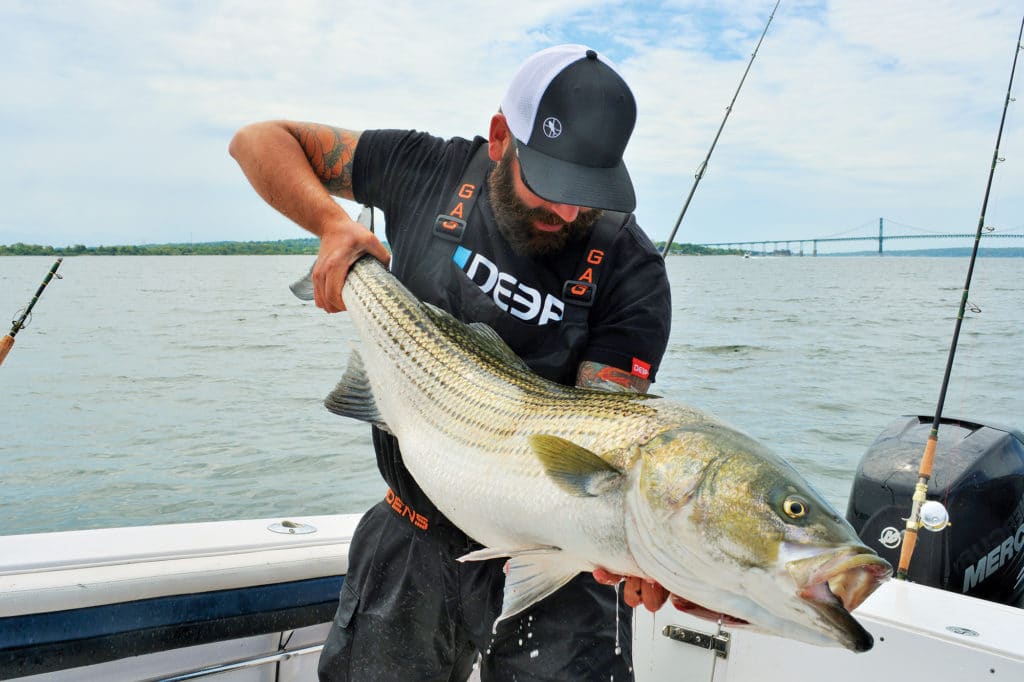
Concentrated Fish
Keep in mind that we’ve really experienced only one good year class (2011) in the current fishery. That means the fishing is less consistent than when we once had consecutive abundant year classes. From the late 1990s to 2007, waves of fish of different size classes — with lots of overlap — came through. In other words, the fishing was much more consistent and predictable. Region by region, you had a pretty good idea of what was going to happen at a certain time of the year. That’s not the case anymore.
Maine guide Doug Jowett calls it the new normal: waves of fish, but with little overlap. There are solid, concentrated bodies of fish moving from region to region. “We may have an epic bite one day,” he says. “The next day you go out at the same tide, bait concentrations are the same, but the fish have moved on.” There wasn’t anything before them, and there may not be anything after them. Van Staal’s Cantelmo correctly describes it as feast-or-famine fishing.
This doesn’t apply to just those 2011 schoolies; it also applies to what’s left of the big fish, except with them, it’s much more accentuated. The last several years have been marked by short, extraordinary runs of exceptionally large fish.
For example, in 2014, for about two weeks we had large stripers keyed on adult menhaden (bunker) schools off Fire Island, New York. For several days, it was hard to find one under 30 pounds. We even stuck a few tipping the 50-pound mark. And then, one day, while the bait was still there, they were gone. Central New Jersey had a similar run of fish this fall. There are probably dozens of examples of such concentrated schools of large fish occurring from Cape Cod to Cape May in the last few years.
Montauk, once noted for its sensational striped bass blitzes, now seems to have a very condensed season. “[In the past] I could pretty much guarantee we’d see blitzes from the second week of September all the way to late October,” says Capt. Paul Dixon, who has been guiding out of Montauk for the last two decades. “Now we get maybe a week or two of that, and we don’t know when it’s going to happen.”
Even with the influx of schoolies this year, the days of predictable and consistent fishing seem to be gone.

Keep Your Ear to the Ground
You have to pay attention to what’s going on in your local waters and be ready to make the trip when it’s on. “Our membership has become far more mobile,” notes Paquette, “because there are simply fewer migration pushes.”
“You can’t be wed to a place,” says Rhode Island’s Jenkins. In other words, there are no true dependable spots anymore.
“Years ago, the standard was to stick with a spot and wait for it to happen,” says Hromin. “Now you’ve got to go where the fish are as soon as you get the word. If you wait on a tide, you might lose out.”
It helps to have good relationships with anglers in different locations. Networking is a lot more important than it used to be. “I rely a lot more on communication with other guys than I used to, because I have to,” says Dixon.
If you want to catch stripers consistently, you have to put yourself in the loop, or even create your own network of friends. It seems like the days of the lone, secretive angler have passed. But the digital age, for better or worse, has made communication quite a bit easier than it was a decade ago.
We may have an epic bite one day. The next day you go out at the same tide, bait concentrations are the same, but the fish have moved on.

Have A Game Plan
If you want to regularly target bass larger than schoolies these days, you have to be a better angler. That means thinking more about when and where, and about what the conditions might produce.
“Feeding habits are generally the same,” notes Jenkins, “but the number of fish practicing those habits has significantly decreased.” There’s less competition, and those larger fish are picky about when and where they feed.
Tidal phases are even more important now, says Maine light-tackle guide Capt. Eric Collins. “There are shorter windows in the tide where the fish appear to be actively feeding,” he explains. Don’t assume the prime window is the last hour of the falling tide. Every spot is a little different, so local experience and knowledge come into play. Understanding the most recent feeding pattern takes time on the water.
“You can actually [forecast] the whole season and [highlight] up to 20 or so good times to go for a given spot,” says Collins. Look for times with a fair amount of water exchanging; you want that exchange to happen during the transition from light to dark. There are so many variables specific to a place, but the idea is to pick days or nights that look good on paper, then make the time to go.
“You can’t be casual about it anymore,” says Dixon. “You better have a game plan.” Develop a good strategy based on which spots might work and when.

To understand the new trend and know how to adjust for success, you need a quick recap of stock dynamics and the current state of the striper.
The stock is not technically overfished. As of 2014, the number of spawning fish has remained above a scientifically determined “spawning stock biomass” threshold. However, the same 2014 assessment also made clear that if trends continued, striped bass might very well reach the overfished threshold by 2015. That said, the sky is not falling, and we are nowhere near the sort of “collapse” we saw in the ’80s.
Why the decline? While it’s easy to point the finger at too much fishing — and to some extent this is indeed the case — environmental conditions appear to be the main culprit. Striped bass are anadromous: They live most of their lives in salt water but spawn in fresh water.
The Chesapeake Bay, the largest estuary on the striper coast, where most striped bass spawning occurs, produces about 80 percent of the coastal stock. Young-of-the-year survival seems to depend on cold winters and wet springs, which produce plenty of food for striper fry.
According to annual Chesapeake Bay striped bass young-of the-year surveys, production in the Chesapeake Bay was quite good in the decade leading up to 2003. The years following 2003, up to 2014, were average and in some cases well below average, with the notable exception of the 2011 year class, the fourth largest on record. While the ink is not yet dry at the time of this writing, 2015 appears to be a good year also.

Catching the Big Ones
There’s a relatively new pattern of seemingly isolated bodies of extra-large fish showing up in very specific areas. Combine this with another unique development over the last few years, and we’ve got one interesting dynamic.
That development is a massive influx of menhaden. We’ve had an extraordinary amount of them during the last few years from Rhode Island to Delaware. There have been huge concentrations of these fish, sitting mostly right off the beach. And it doesn’t appear to be seasonal: They’re around in the spring, summer and fall. The bait tends to be much more widely distributed than the stripers. A body of big stripers could show up on these bait concentrations anywhere at any time. And when they do, it’s game on.
In the old days, it took a real die-hard, willing to fish 12-hour night tides in the fall, to catch a true 50-pounder. For better or worse, now it sometimes takes just a weighted treble hook and being in the right place at the right time. Yes, there are indeed times you can catch these fish on plugs. (In my opinion, the Guides Secret Poppa Pencil is the best plug to use for this.) But for the most part, it’s “snag and drop” — snag a menhaden on the spot, and drop the bait down.
Keep your ear to the ground and find out when and where the bite is happening. With preparation, it’s entirely possible that you could land a 50-plus-pound fish. Conditions have changed over the years, but there are still opportunities for great striped bass fishing and real trophies. These days you can’t expect to just go out and catch, however. Be prepared, downsize for schoolies, fish the best conditions, network, and be ready to get on it when it’s good.
About the Author: Capt. John McMurray is the owner and operator of One More Cast Charters in Oceanside, New York. He also sits on the ASMFC Striped Bass Advisory Panel and the Mid-Atlantic Fishery Management Council, and is the director of grant programs at the Norcross Wildlife Foundation.


